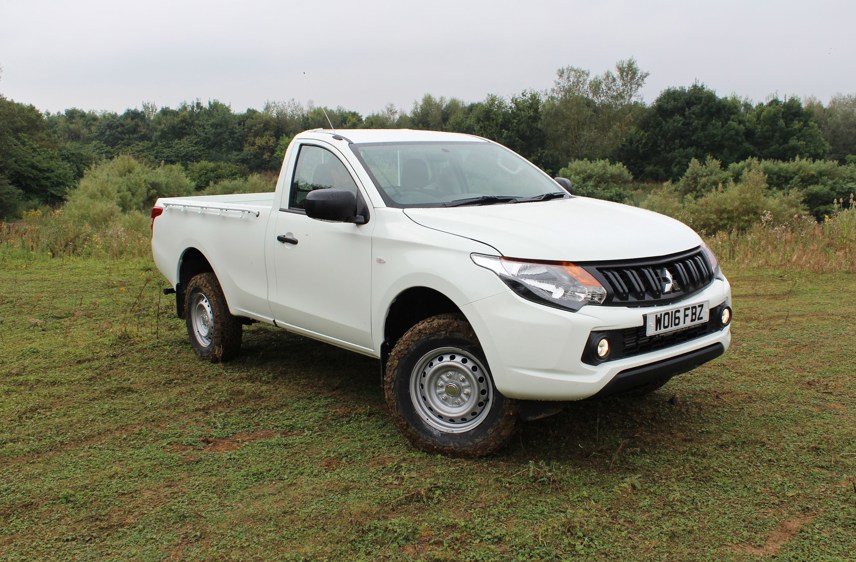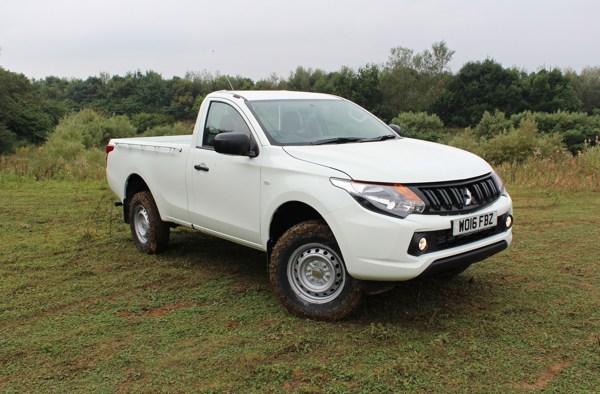Review
The fifth generation L200 went on sale over a year ago in Double Cab guise, winning strong approval from Commercial Fleet for its balance of refinement and value for money.
Fast-forward 12 months to September 2016 and Mitsubishi finally added the low-cost Single and Club Cab versions to the range.
The two-seater Single Cab costs £17,499 and the Club Cab, which seats four, is £18,499 (ex-VAT). Both models manage to trump rivals Ford Ranger and Toyota Hilux on spec and price – only the lower spec Isuzu D-Max is cheaper.
The market-leading Double Cab model has already sold 7,000 units in the past 12 months and Mitsubishi expects it to account for 40% of registrations this year.
Single and Club Cab models will each account for 30% of sales, with fleets showing a slight preference towards the latter thanks to its extra practicality.
Clive Messenger, head of corporate sales for Mitsubishi, said: “It’s a modern working vehicle. Traditionally L200s were built to do a job but these have been built with comfort in mind and the spec drivers want.”
Both models are only available in entry level 4Life trim although it is still well-appointed. Standard equipment includes air conditioning, two airbags, digital radio with steering wheel mounted controls, Bluetooth, stop-start and hill-start assist.
The interior is rather lacklustre with simplistic controls and dated switchgear. Grey plastic is the order of the day but everything has a solid feel ideal for commercial use.
Buyers who opt for the Club Cab will benefit from the L200’s rear-hinged ‘suicide’ doors, which allow easy access to the back seats.
It’s not a new development but one which adds extra practicality without compromising load space.
The load bay is 1,810mm x 1,470mm x 475mm on the Club Cab while the Single Cab extends the length to 2,230mm. Both can carry a 1,045kg payload.
All L200s are powered by the same 2.4-litre diesel engine, which in 4Life models develops 153PS and 380Nm of torque – enough to tow a three-tonne trailer.
The Euro 6-compliant unit was designed to work without a need for Adblue and can return an average 40.9mpg and CO2 emissions of 180g/km.
With an empty load bed, the L200 feels brisk. It delivers a healthy dose of torque in all six gears allowing for safe overtaking and stress-free cruising.
The most notable characteristic of the new L200 is the way it soaks up the miles. The Mitsubishi engineers have managed to shed the agricultural driving experience that previous versions suffered, although the heavy mechanical feel of the manual gearshift has remained.
At speeds up to 70mph there is minimal wind noise and most impressive is how quiet the engine is. Unless you really work the unit, it remains almost inaudible.
The steering is precise and there is also very little body roll, even with the archaic, leaf-spring suspension. Overall the L200 feels much more nimble on the road than its dimensions suggest but perhaps not as accomplished as a Nissan Navara.
Drive can be delivered to all four wheels by turning the Easy Select switch in the cab, there is also a low range option and diff-lock for the most challenging conditions.
And when you leave the tarmac in favour of rougher terrain, the L200 keeps on performing. In half a day at an off-road course we were unable to get it stuck.
Specs
| Manufacturer | Mitsubishi |
| Model | L200 Light Commercial |
| Specification | L200 PickUp ClubCab 4wd 2.4Di-D 151 DPF SS €6 4Life 6Spd 17MY |
| Model Year | 0.00 |
| Annual VED (Road tax) | £0 |
| BIK List Price | £20,300 |
| CO2 | 180g/km |
| Insurance Group | N/A |
| CC | N/A |
| Fuel Type | |
| Vehicle Type | Pick-up |
| Luggage capacity (Seats up) | 4litres |
Running Costs
| P11D | £20,300 |
| Insurance group | N/A |
| Fuel Type | |
| Cost per mile | 44.56ppm |
| Fuel | 13.17ppm |
| Depreciation | 25.94ppm |
| Service maintenance and repair | 5.45ppm |
Rivals
Info at a glance
-
P11D Price
£20,300
-
MPG
40.9 -
CO2 Emissions
180g/km -
Payload
1,045kg -
Load Volume
N/A -
Load Width
1,470mm -
Load Length
1,850mm







 Diesel
Diesel












